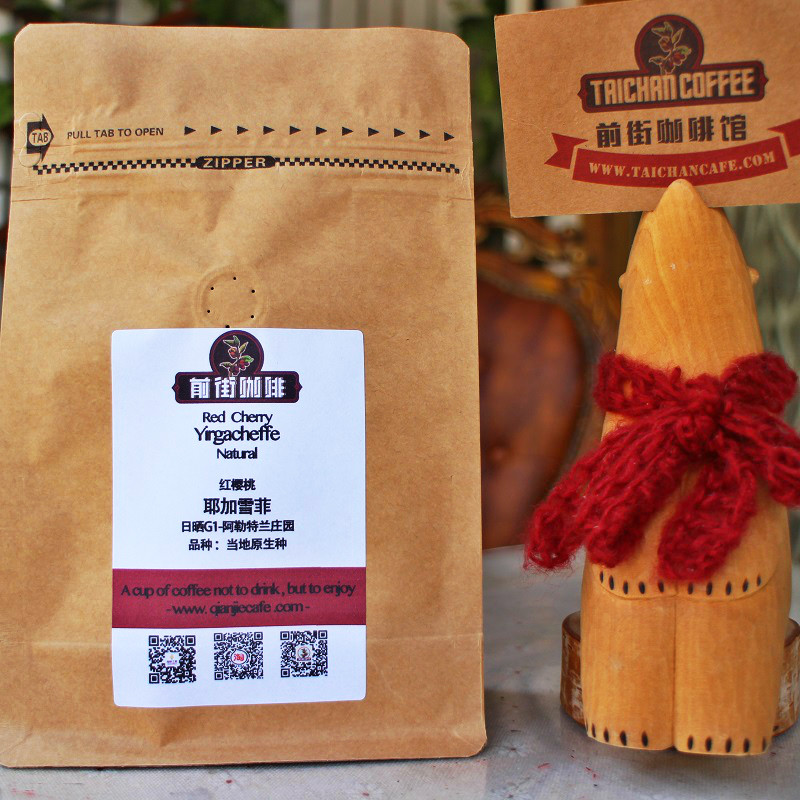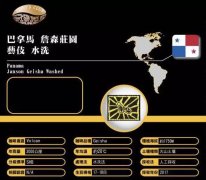Characteristics of Yega Chuefei Red Cherry Story Sunshine Altland Villa and ordinary Yega Chefe Coffee beans

For professional baristas, please follow the coffee workshop (Wechat official account cafe_style)
English product name Ethiopia OCR Reko
The country is Ethiopia.
Producing area Kochere
Producers and local small farmers
Hierarchical Grade 3
Treatment of sun exposure
Varieties mixed with native species (Heirloom)
Sea pull 1850 to 2100 meters
Jieshao:
In 2007, Trabocca Dutch traders launched the Red Cherry Project.
No matter in the treatment of water washing, semi-washing, insolation, half-solarization, etc.
Purely to encourage coffee farmers to produce the best quality coffee.
And let these farmers' efforts be rewarded and rewarded.
Trabocca and before the birth season
Selected farmers or producers are invited to participate in the project
Production of micro-batches of coffee (about 1500 to 3000 kg)
Carefully hand-picked 100% ripe red coffee cherries (hence the name Red Cherry Project)
Trabocca provides financial loan support, new hardware and
Production processing knowledge and technology to assist farmers
Commitment as long as the quality of the actual output is in line with Addis Ababa and Ethiopia
The cup test standard in the Amsterdam cup testing room in the Netherlands
Will be given a good price to buy. The passing standard set by the Trabocca is 88.
After the coffee beans of the Red Cherry Project have been processed in the place of origin,
Immediately packed in plastic inner bags (GrainPro bags or vacuum box)
And then to Djibouti to wait for shipping. Through real-time monitoring,
Safe transportation and timely and appropriate handling
Strive for perfect quality.
And the baker can buy high-quality coffee beans because of this red cherry project.
It also improves the quality of coffee in Ethiopia.
With better prices, Trabocca can also give profits back to farmers
And can continue to improve, the quality continues to improve.
Like Water treatment Plant is in the Trabocca office in Amsterdam.
Hundreds of samples are received every year, during the blind coffee test in December 2013
Trabocca found that this water from the Rico treatment plant washed Yega Xuefei.
It has unique aromas of peach, mango and drupe.
Li Ke is a washing factory opened in 2011 in Kochere, the Yega Xuefei production area.
The altitude is about 1850-2100m. The production season from the end of October to the middle of January of the following year
About 850 coffee farmers will give the coffee to Rico to handle.
In the treatment process, the water from the river near the Like treatment plant is first used for cleaning.
And use the old Aegrd machine to remove the peel.
The pectin part is removed by traditional fermentation, depending on the climate.
There are about 36-48 hours of office time.
Finally, the coffee beans will be placed on the bedstead to dry for 10-12 days.
An elegant, exquisite and sunny red cherry came into being.

Purchase link: https://item.taobao.com/item.htm?spm=a1z10.3-c.w4002-15673140470.9.386105ccKgYqJd&id=555060132728
What is the Red Cherry Project?
Recently, you will see the xx Red Cherry Project in many coffee menu. Xx red cherry in the sun. Xx red cherry washing and so on often guests will ask me xx red cherry is there red cherry in coffee? Some people even claimed that the red cherry coffee he drank really tasted cherry (wow! It's really a god-man. Of course, someone will ask why you should use the word red cherry instead of red apple since there is no cherry flavor. Red strawberry red... In fact, that is because when the coffee fruit is ripe, it will look as dark red as a cherry because it is very similar to a cherry in color and shape, so it is called a red cherry. The Red Cherry Project, or Operation Red Cherry, was initiated by the Dutch to give you a detailed introduction.
After reading it, don't tell anyone that the beans of the red cherry project taste cherry.
Operation Cherrie Red "Red Cherry Initiative" (ORC) is a project to improve the quality of small-scale farms, mainly to encourage soybean farmers and surprise roasters. Trabocca, the largest coffee bean manufacturer in the Netherlands, invited all Ethiopian farms to produce small batches of beans of about 1500-3000 kg (25,050 bags) before the harvest season. Women can only choose fully 100% ripe red cherries, which varies greatly in flavor. So Ethiopian women who are careful and willing to work hard are important drivers of the Red Cherry project.
Operation Red Cherry is also a reinforcing method, which makes the farm pay more attention to the process of selecting beans. The prices of these coffees are also relatively high. Red Cherry Action has water washing, sun-drying beans, half-washing, half-sun, experimental coffee and so on. The main producing areas are Yegashev, Sidamo, Penga Forest, Lekanti, Ken Bata, Iruba, Hara, Lim, and joined Coroja Golocha in 2011 (near Hara). These are unique flavors and can fully show the flavor of Ethiopian beans. Trabocca will choose from the coffee after receiving it. Farms that have passed the cup test quality test in Ethiopia and the Netherlands will pay a high bonus, and the cup test pass score must be more than 88 points in order to become a good coffee for the Red Cherry project. Trabocca, the promoter of the Red Cherry project, invested all the profits earned in the past few years in the cooperative farm. Trabocca stressed that this is an unprofitable plan, so the company only uses four people, including the boss and secretary, to carry out the Red Cherry project, and other administrative related matters are supported by the parent company to reduce administrative expenses, and all the profits are returned to the cooperative farm.
Brief introduction of the Red Cherry Project:
Operation Cherrie Red's "Red Cherry Project" (ORC) is a project to improve the quality of small-scale farms, mainly to encourage soybean farmers and surprise roasters. Trabocca, the largest coffee bean manufacturer in the Netherlands, invited all Ethiopian farms to produce small batches of beans of about 1500-3000 kg (25,050 bags) before the harvest season. Women can only choose fully 100% ripe red cherries, which varies greatly in flavor. So careful-eyed and industrious Ethiopian women are important drivers of the Red Cherry project.
The red cherry program is also a reinforcing method, which makes the farm pay more attention to the process of selecting beans, and the prices of these coffees are relatively high. Red cherries have water washing, sun-drying beans, half-washing, half-sun, experimental coffee and so on. The main producing areas are Yega Sheffield, Sidamo, Punga Forest, Lekanti, Ken Bata, Iruba, Hara, Lim, etc., and joined Coroja Golocha in 2011 (near Harald). These are all unique flavors and can fully show the flavor of Ethiopian coffee. Trabocca will choose from it when he receives the coffee. Farms that pass the cup test quality test in Ethiopia and the Netherlands will pay a high bonus, with a passing score of more than 88 points to become a good coffee for the Red Cherry program. Trabocca, the promoter of the Red Cherry project, invested all the profits earned in the past few years in the cooperative farm. Trabocca stressed that this is a plan with no profit, so the company only uses four people, including the boss and secretary, to implement the red cherry project, and other administrative related matters are supported by the parent company to reduce administrative expenses, and all the profits are returned to the cooperative farm.
Trabocca is the largest coffee and bean seller in the Netherlands and is also engaged in the trade of other primary agricultural products, including cocoa and a variety of fresh fruits. Trabocca is committed to finding a variety of high-quality raw materials, paying attention to environmental protection and paying attention to the lives of farmers.
Ethiopia is the native area of Arabica coffee and the place where humans first met coffee. It is said that the origin of coffee can be traced back to millions of years ago, and the real year can no longer be tested. It is only said that coffee is a shepherd named Cody in the Ethiopian highlands. When he discovered that his sheep had inadvertently eaten a kind of fruit, he suddenly became very lively and energetic, and discovered coffee ever since. All historians seem to agree that coffee originated in the Kaffa region of Ethiopia.
Because Arabica coffee is a "self-pollinating" plant, wild coffee trees in the natural environment have all become "pure lines" in which all dual genes are homogenous through the cycle of self-pollination from generation to generation; plus occasional gene mutations and millions of years of gradual development
Ethiopia may have tens of thousands of native varieties of coffee, and it can be said that the coffee trees that can be found everywhere in the fields or jungles of Ethiopia may be groups of coffee varieties that can be found nowhere else. So Ethiopia is also the genetic treasure house of coffee all over the world.
The most famous producing area in southern Ethiopia is the highest elevation in the Yegashefi region: more than 90% of the coffee is produced by local small farmers who plant coffee trees on a small area of farmland where they grow vegetables and grain. Under the ECX system, Yejasuffe is divided into four sub-producing areas-Wenago, Kochere, Yirgacheffe and Abaya.
Ye Jia Xuefei red cherry
Ye Jia Xuefei red cherry
Ye Jia Xuefei red cherry
Important Notice :
前街咖啡 FrontStreet Coffee has moved to new addredd:
FrontStreet Coffee Address: 315,Donghua East Road,GuangZhou
Tel:020 38364473
- Prev

Difference of flavor characteristics between Panamanian Jensen sun-cured and water-washed Rosa coffee beans
Professional barista communication please follow the coffee workshop (Wechat official account cafe_style) professional barista communication please follow the coffee workshop (Wechat official account cafe_style) Annual rainfall: 3000 mm grading Standard: SHB Coffee Variety: Geisha Annual average temperature: about 20 degrees C treatment: washing raw beans specifications: 17-18 mesh planting altitude: about 1750m soil types: volcano
- Next

Bangkok Theme Cafe Recommended Bangkok Special Cafe Worth a Visit
Professional barista exchanges, please pay attention to coffee workshop (Weixin Official Accounts cafe_style) Blue Whale In an Laocheng District of Bangkok, a popular coffee shop borrows inspiration from the depths of the sea, changes the traditional color of the cafe, takes the deep blue of the ocean as the theme, and attracts the attention of many coffee lovers with mysterious and attractive Blue Drinks. Blue Whale Coffee Shop Deep Sea Blue
Related
- Detailed explanation of Jadeite planting Land in Panamanian Jadeite Manor introduction to the grading system of Jadeite competitive bidding, Red bid, Green bid and Rose Summer
- Story of Coffee planting in Brenka region of Costa Rica Stonehenge Manor anaerobic heavy honey treatment of flavor mouth
- What's on the barrel of Blue Mountain Coffee beans?
- Can American coffee also pull flowers? How to use hot American style to pull out a good-looking pattern?
- Can you make a cold extract with coffee beans? What is the right proportion for cold-extracted coffee formula?
- Indonesian PWN Gold Mandrine Coffee Origin Features Flavor How to Chong? Mandolin coffee is American.
- A brief introduction to the flavor characteristics of Brazilian yellow bourbon coffee beans
- What is the effect of different water quality on the flavor of cold-extracted coffee? What kind of water is best for brewing coffee?
- Why do you think of Rose Summer whenever you mention Panamanian coffee?
- Introduction to the characteristics of authentic blue mountain coffee bean producing areas? What is the CIB Coffee Authority in Jamaica?

